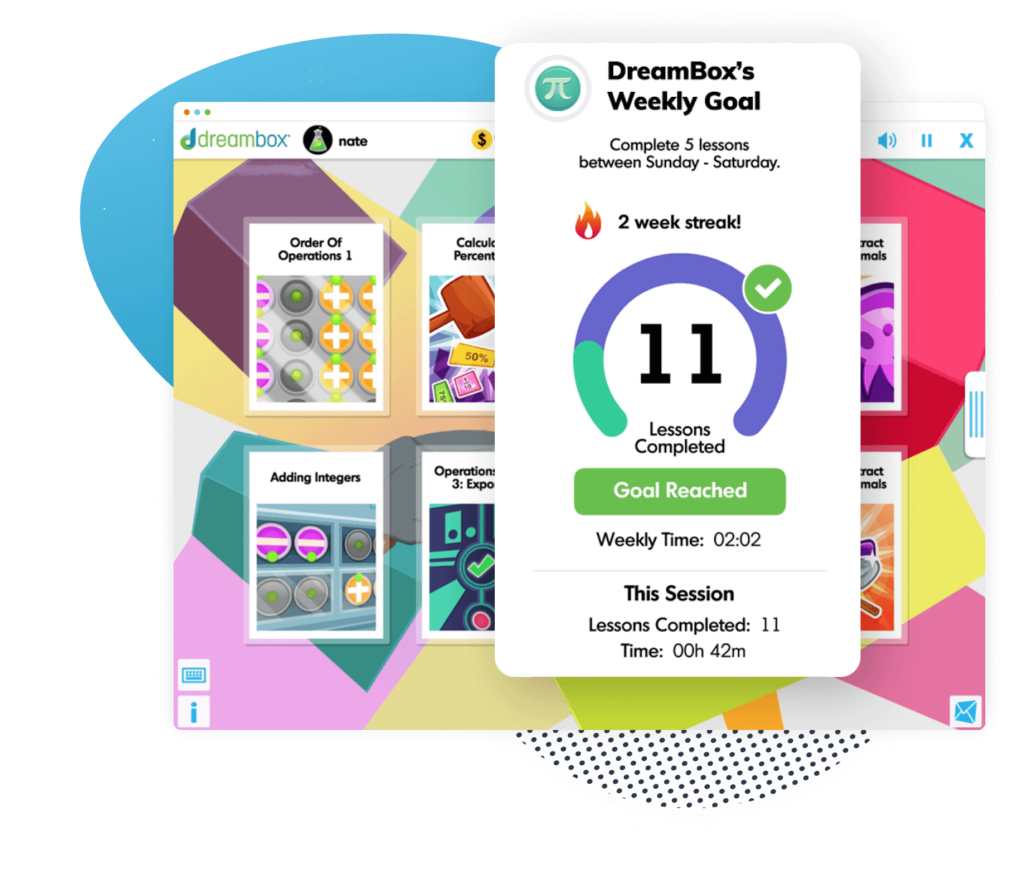Money Activities for 2nd Grade
Teach children financial responsibility and good spending habits with these money activities for 2nd grade.

Author
Tess Loucka
Published:
August 2025
Key takeaways
- • Teaching children about money is key to setting them up for a life of financial responsibility and good spending habits.
- • Make sure the student can skip count first before you expect them to count money.
- • Role-playing games can make learning about money fun for kids.
Money is a complicated concept. Even adults can have a hard time wrapping their heads around it. Whether calculating the tip at a restaurant, trying to set up a monthly budget, or figuring out what you owe a friend after splitting a bill, money skills are a daily necessity—and they don’t always come naturally!
That’s why it’s important to start teaching kids about money early on, giving them ample time to understand how it works before they have to navigate it in the “real world.”
So, teaching kids about money is important, but how do you do it?
Let’s go over a few simple techniques and games that make teaching 2nd graders about money fun for both student and teacher!
Why Teaching Money in 2nd Grade Matters
The 2nd grade is really when students begin to understand how numbers and math correspond to real life. While 1st grade focused on basic operations and the number line, 2nd grade puts those concepts into context.
Along with learning geometry and how to make measurements, students will also learn how to count money in the 2nd grade.
It’s easy to understand why teaching kids about money early on is beneficial. It helps set them up for a life of good spending habits and financial responsibility. If children don’t learn about good money habits, they are less likely to avoid common pitfalls like overspending and debt as adults.
Luckily, establishing a strong understanding of money and good money habits in children is easy with the right techniques and money activities for 2nd grade!
Fun and Engaging Money Activities for 2nd Graders
Money provides the perfect opportunity for hands-on learning. You can use real bills and coins, board game money, or purchase play money—often oversized and colorful, which is perfect for little ones.
The secret to teaching kids anything is, of course, making it fun and engaging. Children don’t have the same discipline adults do, and when it comes to talking about finances, it’s easy for them to lose focus.
So, here are a few attention-grabbing and interactive money activities for 2nd grade you can do with your child or student to teach them what they need to know about money.
Coin Recognition and Value Games
The first skill you should teach is how to recognize the different coins. The four coins—pennies, nickels, dimes, and quarters—each have a distinct size, design, and most importantly, value.
To make kids more familiar with the different coins, play simple sorting and matching games. First, provide them with a pile of coins. Then, they can organize the coins by type.
Once they’re familiar with the looks of each coin, provide more specific instructions. You can say, “Find all the quarters,” or “Take out all the nickels,” or “Find all the coins that look like this,” etc.
Simple activities like this are perfect for building up coin recognition and confidence with money.
Counting and Making Change
Once kids can recognize and sort the different coins by name, it’s time to teach them about the values of each coin. This can be tricky, so take it slow!
Build Your own Piggy Bank
In this activity, students get a container that will act as their piggy bank. Each “turn” of the game will involve the student earning a certain amount of money, which must be added to their piggy bank.
The amount of money that must be added can be made up by you, or randomized using a spinner. The student must then collect that amount from a pile of coins to put into their piggy bank.
Counting the Change
For this activity, come up with various scenarios that include customers purchasing items from a store.
One example might be, “Maggie bought a candy bar for 35 cents. She gave the store clerk two quarters. How much change should she get back?”
This activity involves three steps:
- Counting how much money the customer gave the store clerk in total
- Figuring out how much change the customer is owed
- Putting together the proper change.
With the Maggie example, the student should first determine how much money Maggie gave the store clerk. She gave two quarters, which is 50 cents.
Next, the student must figure out how much change Maggie is owed: 50 cents – 35 cents = 15 cents.
Finally, the student can use coins available to them to create their own combination of 15 cents to give Maggie as her change. In this example, that could be fifteen pennies, three nickels, or one dime and one nickel.
The more creative you get with your examples, the better!
Board Games
Some board games, like Monopoly, Payday, and The Game of Life, incorporate counting money into their gameplay. Outside of traditional lessons and money activities for 2nd grade, playing board games can be a great activity that’s both a lot of fun and educational.
Printables
Alongside hands-on activities like the ones above, printables and worksheets are great tools for extra practice. Money activity printables can be found online or through math apps.
Not only will they provide more practice with counting money, but they will give students more practice with reading, solving word problems, and writing out their work.
Table of contents
Get more practice with second grade math with DreamBox!
Real-Life Money Scenarios
When teaching kids about money, connecting the concept of money to real-world spending and earning is essential! Money isn’t just made up numbers—it’s a real part of daily life that kids should be comfortable with.
You can connect money concepts to real life through role-play activities!
Running a Business
In this activity, students get to create and run their own business. Give them the opportunity to design their own store, come up with goods to sell, and create their own prices. Next, either you or other students will act as the customers.
The customers will “buy” the items from the store, and the student running the store must take their money and calculate change.
This activity gives the “store clerk” plenty of opportunity to count money and calculate change, and it also gives the “customers” money counting opportunities as well.
If teaching many students, have them work in pairs of two. One is the store clerk, the other is the customer. After 5 minutes, switch!
The Shopping List
For this activity, students are given a shopping list and a set amount of money. Their task is to go to the “store” and purchase everything on their list without going over their budget.
The store can either be a real prop set up by you, or simply drawn out on a piece of paper.
The store must have multiple types of the same items, like two types of cheese, two types of milk, two types of apples, etc, and each variation should cost something different.
This means, not only will students have to calculate their spending, but will have to choose what they buy depending on how much money they have left.
Household Chores and Allowance
For parents or guardians, household chores and allowance is one of the best ways to introduce your child to money and good spending habits.
Give your child tasks to do around the house and reward them with a set amount of money, or simply give them a weekly allowance. If they ask for small things like candy or toys when you go out, tell them they can only get what they want if they use their own money.
Not buying your child everything they want, but forcing them to spend out of their own wallet will teach them the reality of life—you can’t always get what you want!
Besides that all-important life lesson, having their own money will also teach kids about budgeting, saving, and spending on things that really matter.

The math program that drives results
Get started today!
DreamBox adapts to your child’s level and learning needs, ensuring they are appropriately challenged and get confidence-building wins.
Tips for Teaching Money Concepts Effectively
Not every child learns the same—some will find counting money a breeze, while others will get stuck and frustrated. For that reason, it’s always best to start slow and build up a strong foundation before jumping into anything too tricky.
Always start teaching money concepts by teaching coin names and values. Students should be able to identify pennies, nickels, dimes, quarters, and bills easily and should know what their values are before moving on to anything else.
After that knowledge has been firmly established, make sure your students can skip count. Skip counting is what we do when we count money. For instance, when counting nickels, we go, “5, 10, 15, 20, etc.” If students cannot skip count yet, focus on building up that skill before asking them to count money.
Once your students can identify different types of money and skip count, the next step is to get them to practice counting groups of the same coin. Give them a handful of dimes and ask them to write down their total value.
Do this before asking them to add different coin and bill values together!
Lastly, reinforce their money skills with classroom games and real-life practice. Make sure they understand that money doesn’t just exist in the classroom but is an essential part of life.
Take at home math practice to the next level
Empowering parents and educators to make math practice more impactful. Plus, your kids will love it.

FAQs about 2nd Grade Money Activities
Board games like Payday, Monopoly, and The Game of Life incorporate money and counting into their gameplay, making them great money games for 2nd graders.
Teach your child the names and values of the different coins. Next, practice skip counting. Once your child can comfortably identify coins and skip count, they’re ready to start counting coins!
Try role-playing games in which your child must either purchase things from a store or run their own store and calculate change for their customers. Additionally, give your kids a weekly allowance and make it a rule that anything they want to buy must come out of their own wallet, not yours.

About the Author
Tess Loucka
Tess Loucka discovered her passion for writing in high school and has not stopped writing since. Combined with her love of numbers, she became a math and English tutor, focusing on middle- and high-school-level topics. Since graduating from Hunter College, her goal has been to use her writing to spread knowledge and the joy of learning to readers of all ages.